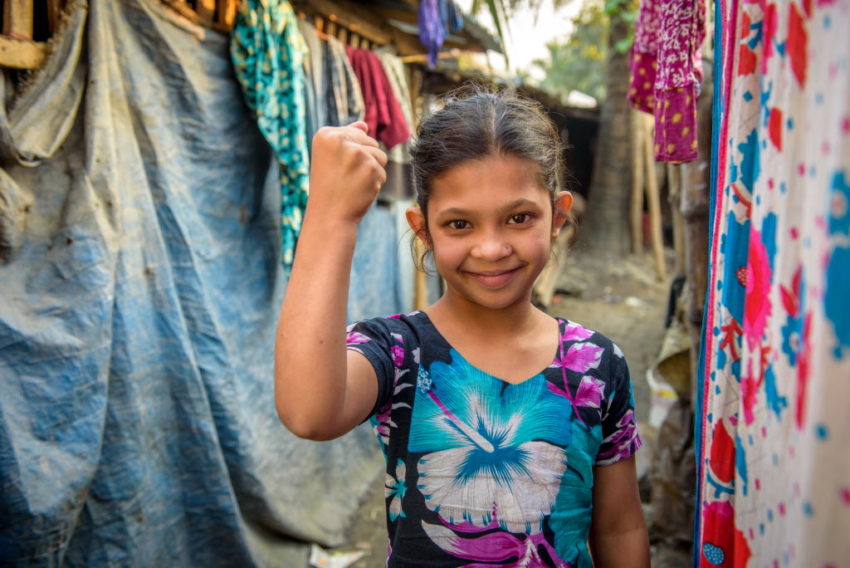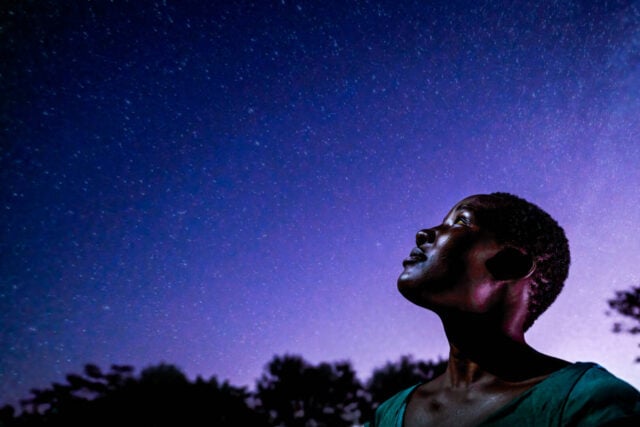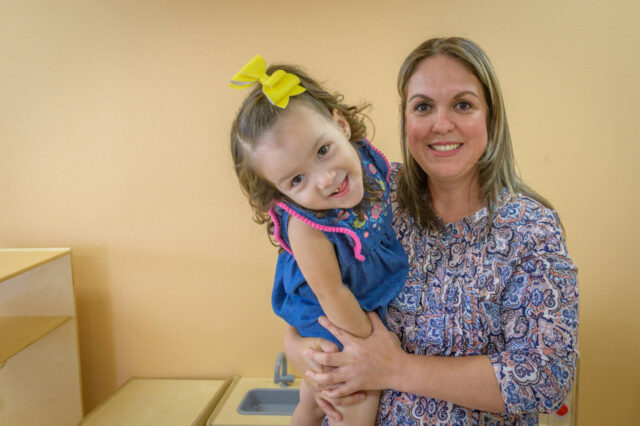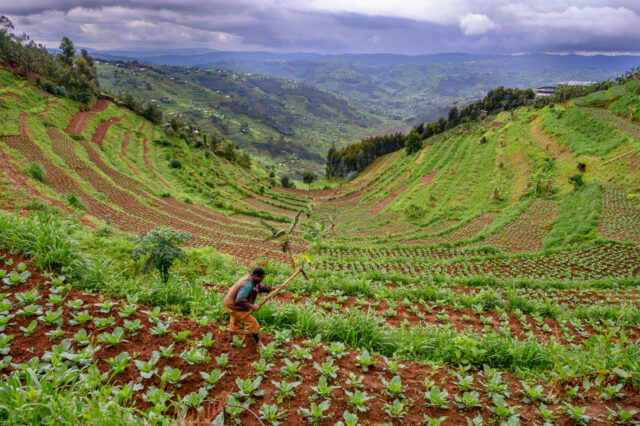World Vision’s award-winning photographers travel around the world every year, capturing moments of God’s grace and faithfulness as we follow Jesus’ example to show unconditional love to the poor and oppressed. They bring back stories that inspire us to action and compassion.
Discover what’s it like behind the scenes during some of these moments, published quarterly in the 2017 issues of World Vision magazine.
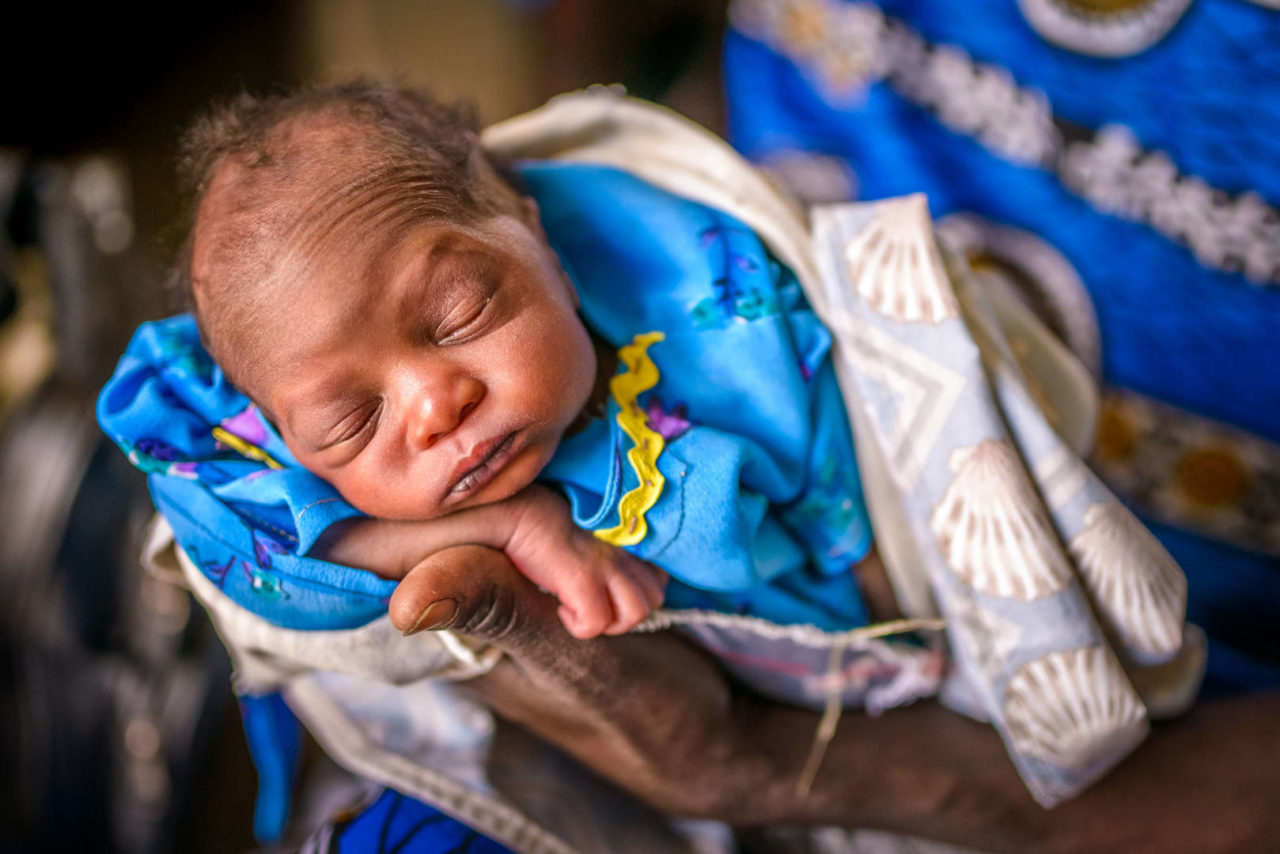
The joy of a baby
Written and photographed by World Vision photographer Jon Warren
Nikon D800 camera
35mm lens, 1/1000th at f/1.4, 640 ISO
* * *
I remember the happy smiles, the “oohs” and “aahs” at the Morungtuny Health Center in Uganda. A mother had come in with her new baby.
She proudly raised the newborn up to my camera. I dialed the aperture on my 35mm lens to F/1.4 to isolate the baby’s beautiful face from the clutter of the crowded clinic. A few quick frames and then the baby was bundled up again, and the mother stepped back into the waiting line.
What a wonderful gift!
Every opportunity for a good photograph is a gift, of course, but I’m speaking about the baby.
What is it about babies that brings us such joy when we see them, that makes us cherish them as rare gifts? God sent his ultimate gift of Jesus to Earth as a baby. And Jesus himself couldn’t resist children. He said, “The kingdom of God belongs to such as these” (Luke 18:16). Is it their potential, their vulnerability, their innocence, their tenderness? After all, many of them are entering a difficult world, as was this baby in Uganda.
Even in the hardest of times, we believe the possibilities for a baby are endless. And no matter what the future holds, this baby will always be someone special to God — created in his own image — an image that inspires smiles.
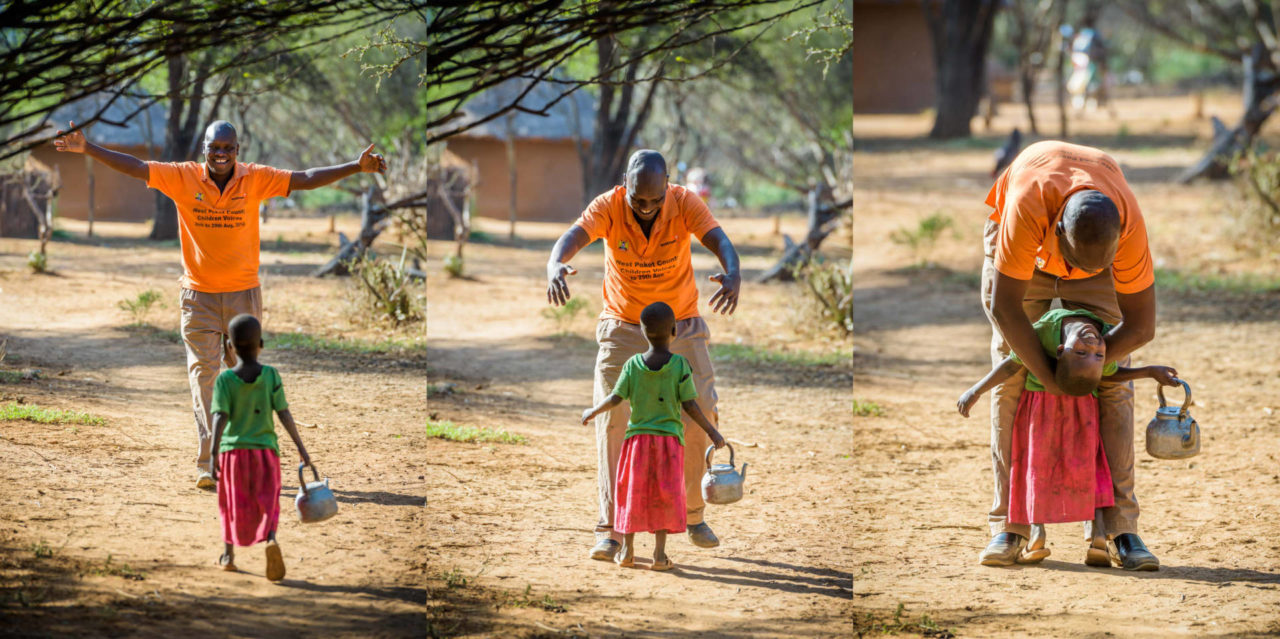
A reason to smile in Kenya
Written and photographed by World Vision photographer Jon Warren
Nikon D810 camera
70-200mm lens, 1/800th at f/5, 250 ISO
* * *
Shout out his name the way Cheru and other kids do every time they see him zoom by — “ABOOO!”
Abu (his real name is Abraham Lokilimak) is a driver for World Vision in Kenya, but like many of our field staff, he does much more. I joked with Abu that he should have six desks in the office. An obvious one for transport, his official job. Another for IT solutions: I listened to him advise others on the most efficient formats for email attachments. Yet another for translation services: Abu speaks at least three languages fluently. Add community development: Abu is deeply involved in programs to make children’s lives better. And don’t forget guest relations, where he really shines.
Abu drove us down an impossibly bumpy road to Cheru’s house the second day we came to film her walk for water. I had my Nikon D810 and 70-200mm lens ready as soon as I got out of the car, in time to witness Abu’s happy reunion with Cheru in one of the rare moments she smiled. His gentle affection for Cheru didn’t stop there. When she got tired on the long, hot walk for water, Abu hoisted her onto his shoulders and carried her tea kettle filled to the brim with water.
With a great big smile, Abu says, “The children love me.” Not just the kids. I love him, too!
Editor’s note: Cheru’s story was featured in our spring 2017 World Vision magazine. See photos of her walk for water and a video clip of the road Abu drives to reach her.
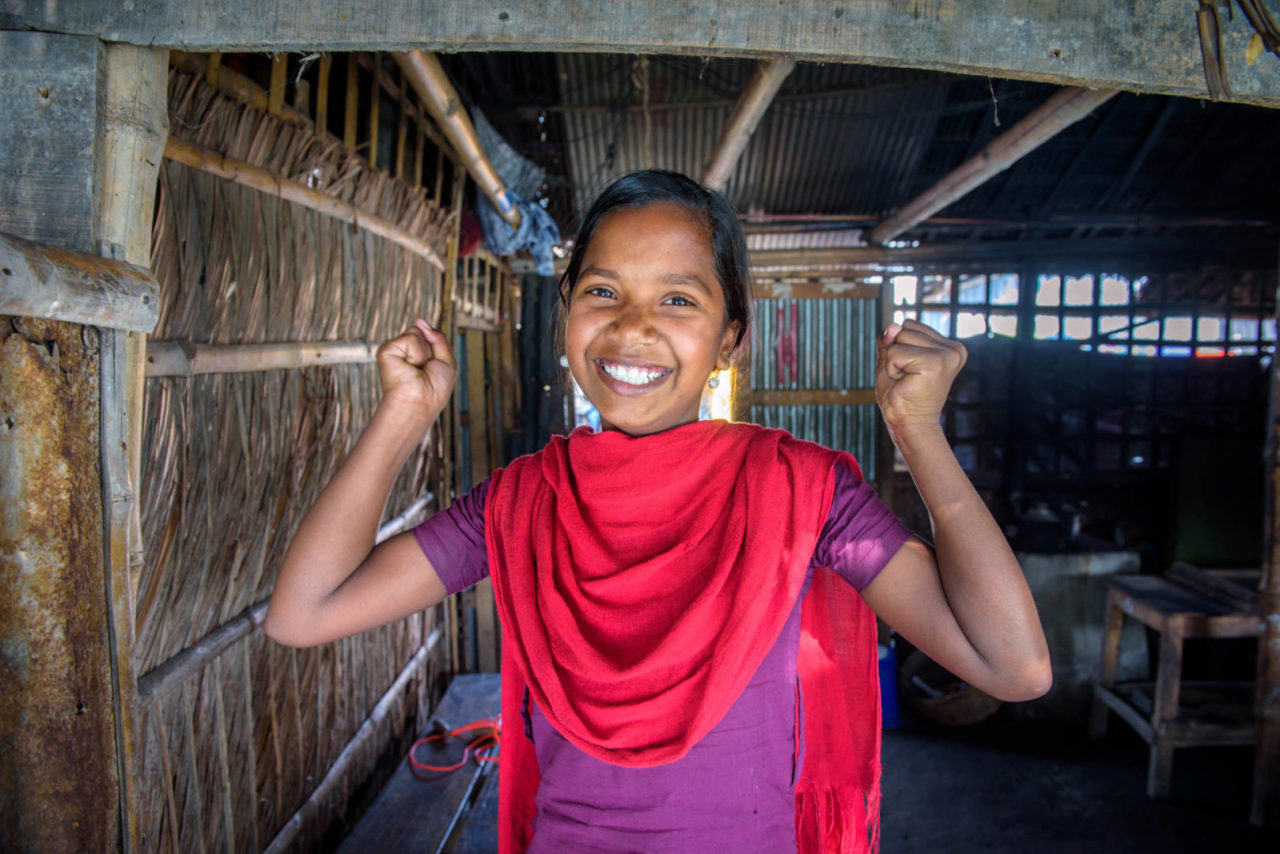
Capturing the confidence of children in Bangladesh
Written and photographed by World Vision photographer Laura Reinhardt
Nikon D750 camera
24-70mm lens shot at 29mm, 1/60th at f/4.5, ISO 400
* * *
On a recent trip to Bangladesh, my assignment was to cover World Vision’s child protection programs. The program was still quite new, so I didn’t have the advantage of dozens of success stories.
To show the need to protect vulnerable children, I started by photographing a girl who was in tears as she shared her sorrows. Then, I photographed a few boys working in welding shops with no protective eye gear and only sandals on their feet as sparks flew. These definitely demonstrated heartbreaking need.
I wondered what these kids would be doing if they weren’t working. They could be in school or possibly playing, so I tried those pictures, too. One girl told me of her hope of becoming a nurse, and I took a shot of her bandaging the finger of a child in her slum community. I felt like I was moving in the right direction.
Then I asked Purnima, 11 (above), to show me what she thought a strong girl looked like. I wanted to show an empowered child because that’s the ultimate goal of World Vision’s child protection programs — to create confidence and move them toward a more hope-filled future. This was her response, and I loved it!
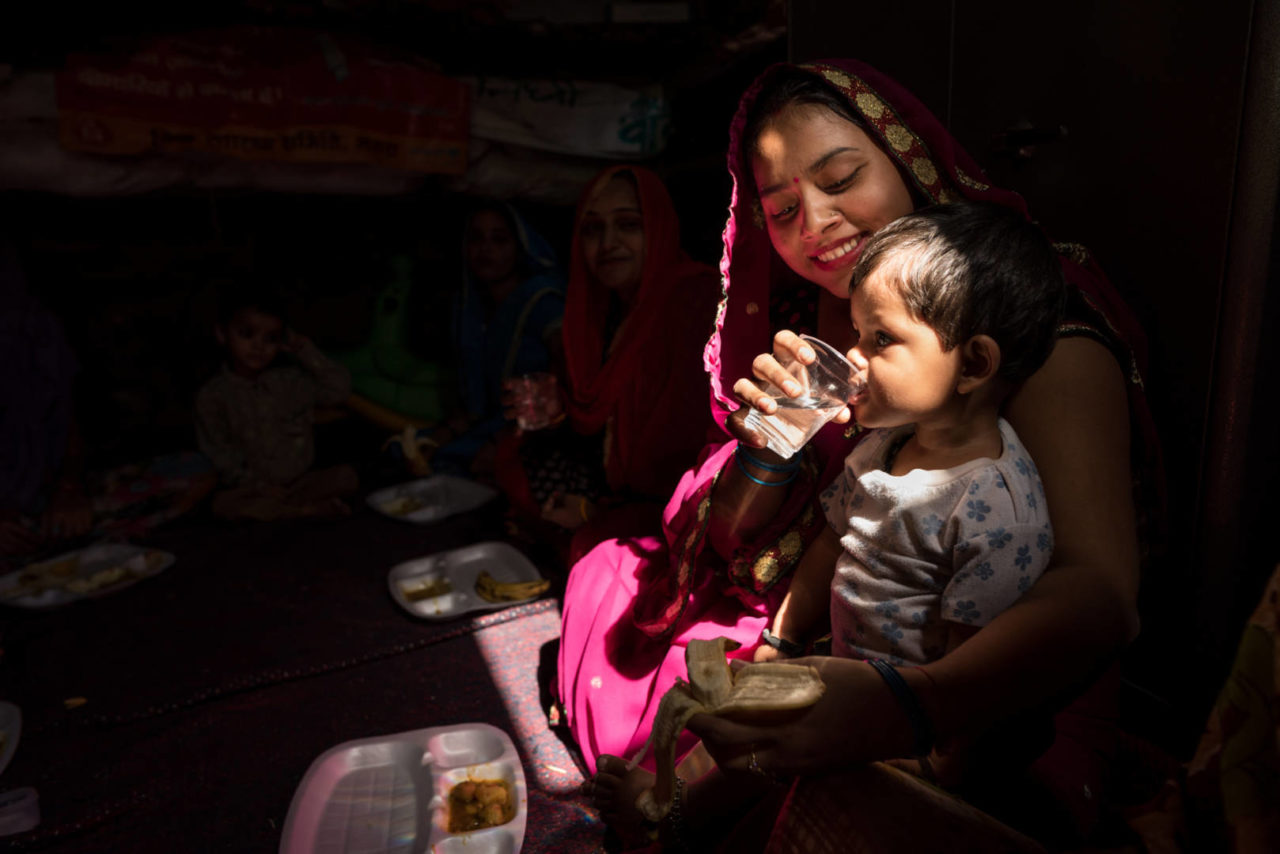
Waiting for light in the darkness
Written and photographed by World Vision photographer Eugene Lee
Nikon D750 camera
24mm lens, 1/250th, f/4, ISO 200
* * *
Earlier in the day, I photographed a children’s club meeting in this small, dark room in Agra, India. Spotlights from ceiling holes created dark shadows or blown highlights, so it was challenging to get an even exposure across the frame. I tried waiting for action to enter one of the shafts of light, but the children’s games ended, and I had nothing.
I’d moved on to photographing street scenes and disregarded the room as a location to shoot, so when this mothers’ group assembled in the dark room, my heart sank. I almost didn’t bother going back in. I thought my best-case scenario was to ask the mothers to sit in the doorway or front steps where there was more light.
But despite my doubts, I decided to give the room a quick look before asking the group to move.
My persistence paid off. Pooja and her toddler were quietly eating lunch with a cup of water in hand — a cup of clean water purified by a portable water purifier that World Vision provided.
I smiled to myself and waited for the child to take a drink.
Read more testimonies from World Vision photographers in our Life Frames series.
